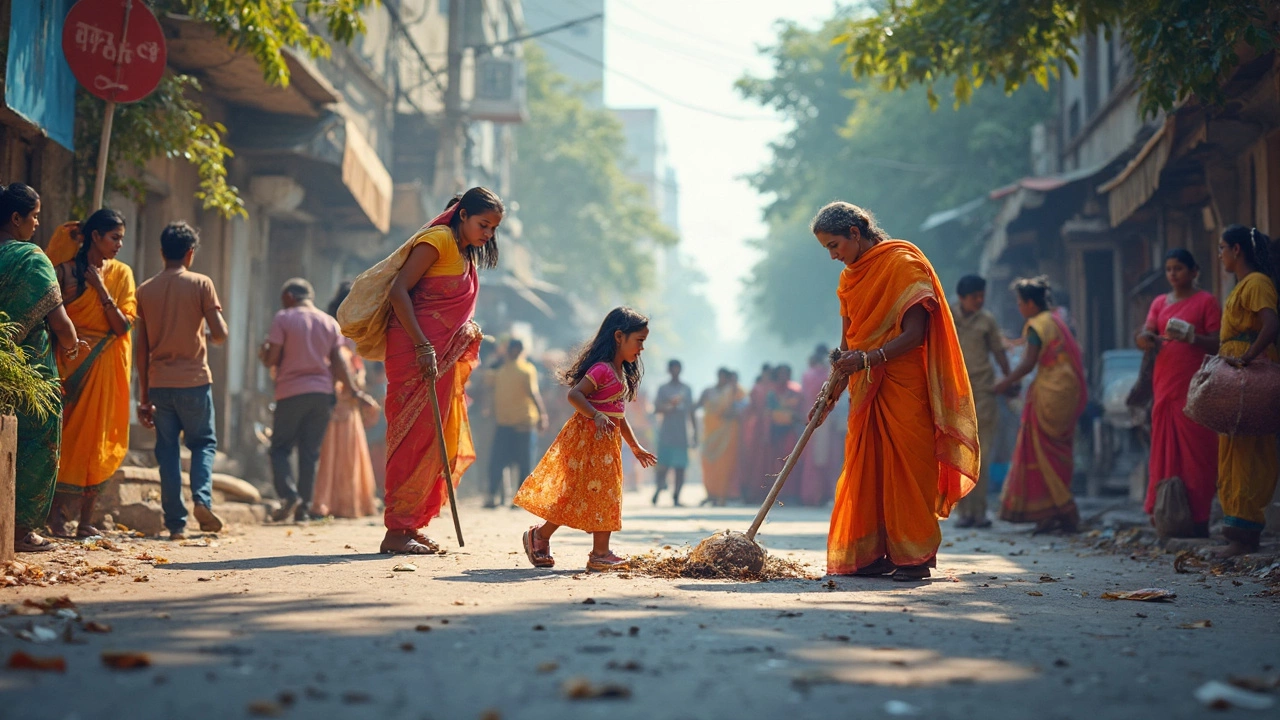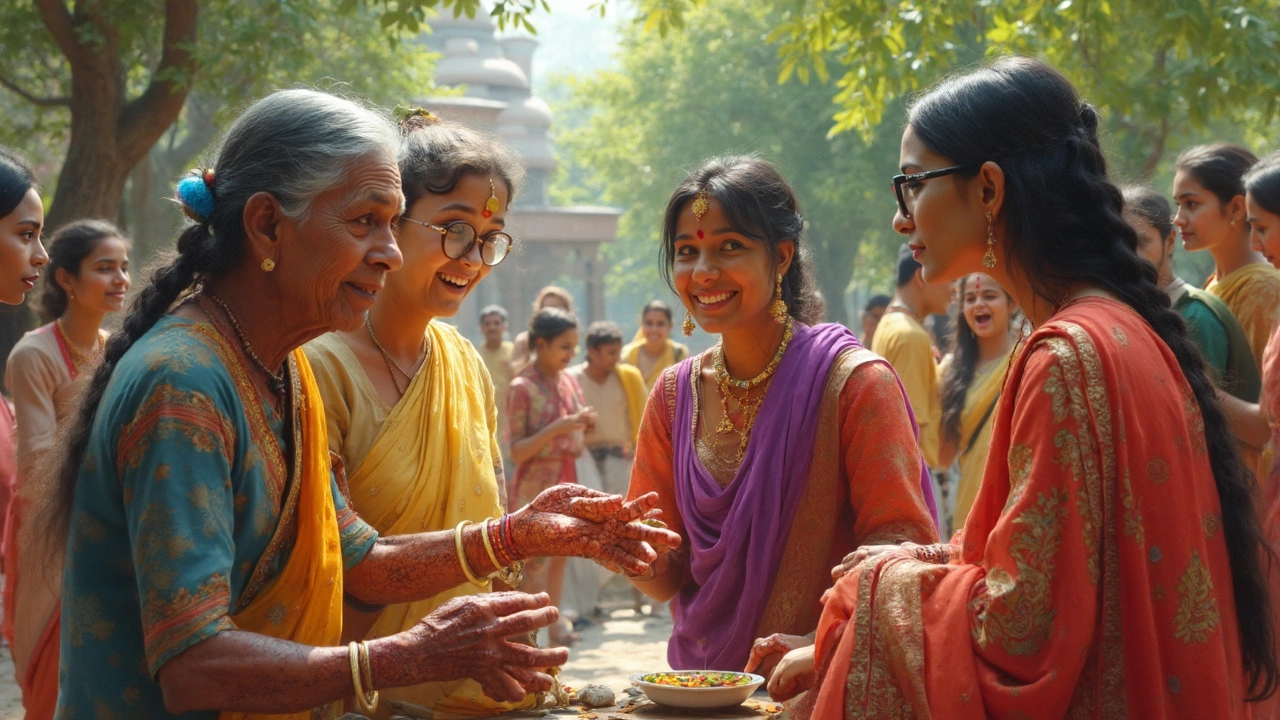Ever wondered which age group rolls up their sleeves the most to give back? While you might think it's a bunch of college students with endless energy, you'd be surprised to find out how often older folks show up to volunteer, too. It's like the older we get, the more we feel the urge to connect and contribute.
Turns out, people in their mid-30s to early 50s are pretty active in volunteering. It's probably because they're settled in their careers and are looking to add more meaning outside work. Plus, with kids in school, there are tons of school-related opportunities to chip in.
- The Youthful Spirit of Volunteering
- The Golden Mid-Years’ Contribution
- Seniors Leading with Experience
- Why Age Differences Matter
- Getting Involved: Tips for All Ages
The Youthful Spirit of Volunteering
The younger generation, especially those in high school and college, might surprise you with their volunteering enthusiasm. Why? Well, part of it is about building up experience for resumes or college applications. But there's more at play here.
Today’s youth are super aware of global issues thanks to social media. They're often passionate about causes like climate change, social justice, and education. This awareness pushes them to jump into community service with real zest. They volunteer in ways that fit their interests, whether it's a beach cleanup, tutoring, or activism.
Schools play a big role too. Many high schools and colleges have begun to integrate volunteer opportunities into their curricula, encouraging students to aim for a certain number of volunteer hours each year. This not only helps the community but also provides students with a sense of purpose and achievement.
Organizations like Habitat for Humanity and local shelters often gear programs specifically toward younger volunteers. These programs are designed to be short-term but impactful, making it easier for students to balance their time between studies and giving back.
For those young ones eager to dive into volunteering, here are a few tips:
- Start with what you care about. If you're into animals, look for a nearby shelter that needs help.
- Consider your schedule and pick opportunities that fit around school or part-time jobs.
- Join a group or club at school that's focused on community service. It's a great way to make friends and give back.
No matter the reason, this youthful energy adds a fresh perspective and a can-do attitude to volunteer efforts, making a big difference in their communities.
The Golden Mid-Years’ Contribution
When it comes to volunteering, people in their mid-30s to early 50s, the so-called golden mid-years, play a unique and significant role. Balancing careers and family, these folks often find volunteering a rewarding outlet to make a real impact in their communities. Why are these years golden for volunteering? Well, here are a few reasons that stand out.
First, many people in this age group have kids in school, which means a ton of opportunities to get involved with fundraising events, chaperoning trips, or leading after-school programs. These tasks not only support the school but also allow parents to actively engage in their children’s education journey.
Moreover, professionals in their mid-years often have a stable career path which can open up chances to share skills through mentorship or pro-bono work. Imagine a marketing executive helping a local charity amp up their social media presence or an accountant offering free tax advice to nonprofits. This practical application of their expertise provides immense value to local organizations.
It’s also pretty common for this age group to join service clubs or recreational sports leagues that host community events. These instances not only highlight their desire to help but also their need for social interaction with peers facing similar life stages.
Here's an interesting fact: According to data from a 2023 community survey, about 45% of volunteers in this age range prioritize activities linked to their kids' interests, while 30% prefer activities that align with personal hobbies or skills. It's clear that volunteer opportunities in this life stage cater to a mix of personal and family interests.
To make the most of this momentum, communities and organizations can tailor opportunities to fit into their tight schedules, offering flexible times or family-oriented projects. This not only makes volunteering accessible but allows them to incorporate it seamlessly into their already busy lives.

Seniors Leading with Experience
When it comes to volunteering, seniors often pack a punch with their wisdom and passion. These folks, typically aged 65 and older, are leveraging their life experiences to impact communities positively. They've got the time, the know-how, and often, a deep commitment to giving back.
Recent surveys show that about 28% of seniors participate regularly in community activities. They've seen it all and now they're channeling that knowledge into making a difference, whether it's through mentoring the younger generation or lending a hand in community health programs.
“We have the time to reflect on what matters and the gift of knowledge to share. Volunteering lets us do both,” says Joan Davidson, a retired teacher who spends her days reading to kids in her neighborhood library.
Popular areas where seniors dive in include hospital volunteering, where they lend comfort to patients, and environmental projects, tapping into a growing concern for the planet's future. They serve meals, plant trees, and keep trails clean. Motivated by a desire to connect, many join programs that allow them to socialize while making a difference.
If you've retired or have senior family members looking to engage, exploring local volunteer opportunities is worth it. Libraries, hospitals, and food banks are always on the lookout for experienced folks ready to contribute. And who knows? The next volunteer event might just be around the corner!
Why Age Differences Matter
Age differences in volunteering aren't just a fun stat—they're crucial in understanding how diverse experiences fuel various aspects of community service. Each age group brings something unique to the table, making volunteer work richer and more impactful.
Let’s break it down. Young people, like high school and college students, often juggle volunteering alongside their learning. They're tech-savvy and bring fresh ideas. Nothing reinvigorates a traditional setup like a dash of youthful creativity. Plus, many colleges look for community service experience as a nod to character building.
Folks in their 30s and 40s, often referred to as the golden mid-years, have gathered a toolkit of life skills. They're usually in it for the long haul, developing sustainable projects. This age group often mentors youth, thanks to their rich life and career experiences. This kind of inter-generational exchange broadens perspectives for everyone involved.
Then there’s the senior crowd. They're the backbone of many volunteer programs. Often retired, they have more time to dedicate to causes close to their heart. Their work is not just about giving back but also about staying active and connected, which does wonders for their mental and physical health. As one senior volunteer aptly put it,
"Volunteering doesn't just fill my week; it fills my soul."
Now, you might wonder, do these age differences actually affect how impactful volunteering efforts are? A 2022 study by Volunteer Match found that organizations boasting diverse age groups in their volunteer base experienced a 20% increase in community engagement. Diverse teams often spark creative solutions and foster a more connected community.
So, whether you're just starting to explore volunteer opportunities or guiding others on their service journey, remember that every age has its own way of making a mark. Knowing what each group can offer means building closer-knit, more effective volunteer communities. It shows that age isn't just a number—it's a powerful tool in the quest to make a real difference.

Getting Involved: Tips for All Ages
Volunteering is for everyone, no matter your age, and with countless volunteer opportunities out there, it's easier than ever to find your perfect fit. Here's how you can jump in, whether you're a teen, a working adult, or enjoying retirement.
Teens and Young Adults: You're in a great spot to start building those community bonds early. Look for programs that align with your interests—maybe it's animal shelters or environmental projects. Schools and colleges often have clubs that need your energy and ideas, too.
Mid-Career Adults: Life is busy, but that doesn't mean you can't help out. Consider joining efforts that match your skills. Are you a whiz with finances? Nonprofits could use a hand with their budgeting. Short on time? Try micro-volunteering, a way of contributing in small doses that fit your schedule.
Seniors: You've got the secret weapon: experience. Your skills are valuable in mentoring roles. Organizations love having wisdom on board, whether it's helping out in libraries, community centers, or advisory boards.
- Local Community Centers: They often need volunteers for events or classes.
- Online Platforms: Websites like VolunteerMatch help you find causes that fit your interests and availability.
- Existing Networks: Churches, clubs, and social groups always have projects on the go.
Whatever your age, there are plenty of ways to get involved and make a meaningful impact. Just one step into the world of community service can create endless ripples of positivity. And, hey, you'll meet cool people along the way, too!
